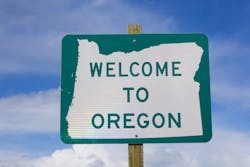One of the definitions Wikipedia gives of the word “commons” is the “natural resources that groups of people (communities, user groups) manage for individual and collective benefit. Characteristically, this involves a variety of informal norms and values (social practice) employed for a governance mechanism.”
So what does a commons mean in the context of health information technology? Well, the State of Oregon is launching an experiment to find out. This month the Oregon Health Leadership Council (OHLC) and the Oregon Health Authority (OHA) released a business plan for the state’s HIT Commons. The plan is designed to guide the creation of a public/private HIT governance partnership for Oregon. Leveraging current efforts, the HIT Commons is intended to help connect existing HIT systems, support statewide solutions, and to guide future investments that support advancing health IT across the state.
Starting in 2018, the HIT Commons will assume governance of the Emergency Department Information Exchange (EDIE) along with other statewide HIT initiatives, with the purpose of accelerating and advancing OHA’s vision of an HIT-optimized healthcare delivery system in Oregon. EDIE is a software tool for proactively notifying EDs when high-utilization or special needs patients register. The information includes those patients’ prior ED visit history, primary care provider information, and associated care plans. This service was expanded with PreManage, which connects health plans, Coordinated Care Organizations, care managers and primary care clinics with this real-time information.
With the implementation of the EDIE Utility model (in partnership with OHA), a more sophisticated model of governance was required. EDIE Utility model is a public/private partnership that includes statewide data exchange among all hospitals, both direct and indirect value return to health plans and CCOs, sponsorship by the OHA and OHLC, and OHLC providing staff support, contract management and financing coordination.
This governance structure provided oversight for project scope, performance, data use agreements, administration of the utility and coordination of efforts among many stakeholders.
So with the EDIE Utility as the model, OHA will co-sponsor the HIT Commons work, and will bring federal and state matching funding for qualifying initiatives under the HIT Commons.
Specific opportunities of an effective HIT Commons include:
• Establishing a neutral governance and decision-making process for investing in HIT efforts
• Leveraging opportunities for shared funding of efforts with statewide impact
• Coordinating efforts to enable a network of networks for health information exchange (HIE)
• Facilitating access to high-value data to improve efficiency and quality of care, including an initial focus on funding a statewide HIT Gateway subscription for efficiently connecting Oregon’s providers to the Prescription Drug Monitoring Program (PDMP), and
• Supporting core infrastructure needed for care coordination and alternative payment models.
The state said the HIT Commons would leverage the experience gained from the EDIE governance partnership model initially, with the intent to move to a more formal, independent legal and management structure as experience warrants. This has been referred to as a “crawl, walk, run” strategy to build on what has worked and provide flexibility for future effective execution of statewide health information technology efforts.
Initial implementation of an HIT Commons is expected to begin in late 2017, transitioning the EDIE Governance Board to the new HIT Commons Board. Initial management of the Commons will be under the auspices of the OHLC and a management contractor. Initial projects for the Commons would be EDIE, Prescription Drug Monitoring Program (PDMP) Gateway, and HIE/network of networks.
The Commons will support the adoption and spread of core technical services offered outside of the Commons where appropriate – including the Common Credentialing Program, Provider Directory, and Clinical Quality Metrics Registry. The Commons is not currently envisioned to hire direct staff to build, maintain, or implement any new technical services.
Start-up planning for the HIT Commons is expected to begin in the final quarter of 2017. Beginning in 2018, the Commons general administrative costs are estimated to be $275,000 per year, assuming the services of a management subcontractor and business operations (accounting, bookkeeping, legal, insurance costs) are provided through OHLC initially.


